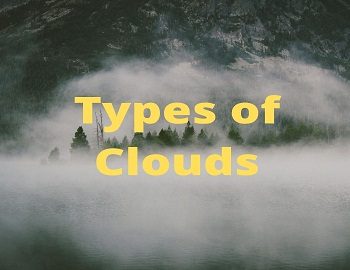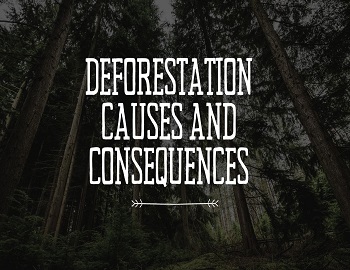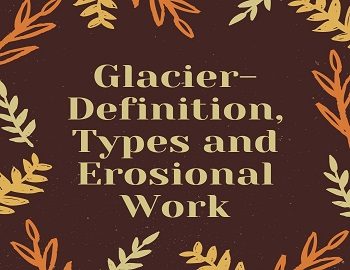Table of Contents
Cloud Formation And Types of Clouds:
- Clouds are made up of condensed water droplets, ice particles, or a mixture of both, suspended in the air.
- Line joining places with the equal degree of cloudiness is called as Isonephs.
Formation Of Cloud:
Cloud particles grow around a tiny center of solid matter. This dust speck of matter called a condensation nucleus. The surface of the sea is an important source of condensation nuclei. Droplets of spray from the crests of the waves are carried upward by turbulent air. When these droplets evaporate, they leave behind a tiny residue of concentrated salt, suspended in the air, that strongly attracts liquid water molecules, stimulating cloud formation. Nuclei are also thrown into the atmosphere from polluted air over cities, where particulate matter and soot aid condensation and the formation of clouds and fog, thereby increasing rates of precipitation.
Types of Clouds:
Cirrus / High Clouds (20,000 – 40,000 ft.)
Cirrus:
- The word ‘Cirrus’ means curls of hair.
- They are thin, stringy white clouds that trail like feathers across the sky.
- When associated with fair weather, cirrus clouds are scattered white patches in a clear blue sky.
Cirro-Cumulus:
- This appears as white globular masses in the form of the skin of sheep hanging on a roof sky.
- Forming a mackerel sky.
Cirro-Stratus:
- It looks like a white thin sheet like a veil.
- The sky looks milky and the sun and moon shine through it with a characteristic ‘halo‘.
Alto / Medium Clouds (7,000 – 20,000 ft.)
Alto-Cumulus:
- These are woolly, bumpy clouds arranged in layers appearing like waves in the blue sky.
- They indicate fine weather.
Alto-Stratus:
- Cloud with a watery look.
Stratus / Low Clouds (<7,000 ft.):
Strato-Cumulus:
- This is rough and bumpy clouds with wavy structure.
Stratus:
- Stratus clouds are best described as sheets or layers that cover much or all of the sky.
- These clouds are generally formed either due to the loss of heat or the mixture of air masses with different temperatures.
- This is a very low cloud, uniformly grey and thick, appears like highland fog or a low ceiling.
- It reduces visibility and so dangerous for aircraft lines.
- It gives light drizzle.
Nimbo-Stratus:
- Nimbus clouds produce precipitation (rain).
- This is a dark dull cloud, clearly layered, as it brings rain, snow, and sleet and it is called rain cloud.
Cumulus / Cloud with great vertical extent (2,000 – 30,000 ft.):
Cumulus:
- The word ‘Cumulus’ means heap or pile.
- It is also called a fair-weather cloud.
Cumulo-Nimbus:
- Cumulo-Nimbus is also called the thunderstorm cloud.
- Its cauliflower shape spreads out like an anvil.
- It becomes darker as it grows higher and thicker, blocking the incoming sunlight.
- Cumulo-Nimbus clouds are the source of many atmospheric concerns including strong winds, torrential rain, flash flooding, thunder, lightning, hail, and possibly tornadoes.









Comments (No)